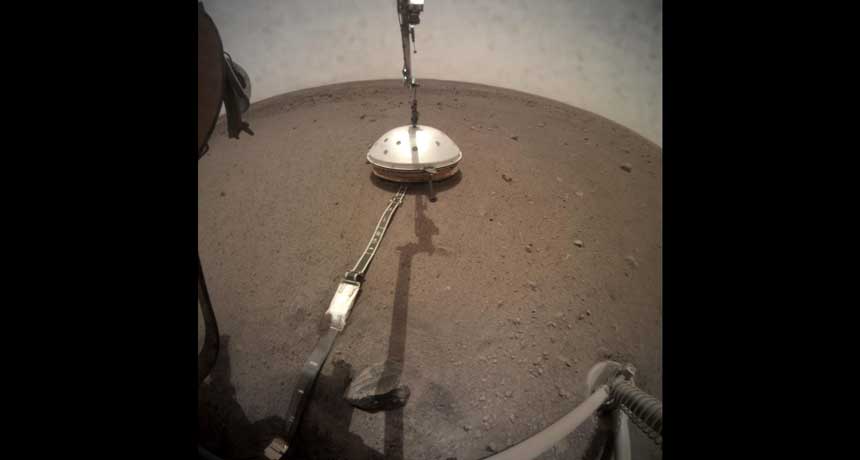core Something — usually round-shaped — in the center of an object. (in geology) Earth’s innermost layer.
crust (in geology) A planet’s outermost surface, usually made from dense, solid rock.
density The measure of how condensed some object is, found by dividing its mass by its volume.
lander A special, small vehicle designed to ferry humans or scientific equipment between a spacecraft and the celestial body they will explore.
mantle (in geology) The thick layer beneath a rocky planet’s outer crust.
Mars The fourth planet from the sun, just one planet out from Earth. Like Earth, it has seasons and moisture. But its diameter is only about half as big as Earth’s.
NASA Short for the National Aeronautics and Space Administration. Created in 1958, this U.S. agency has become a leader in space research and in stimulating public interest in space exploration. It was through NASA that the United States sent people into orbit and ultimately to the moon. It also has sent research craft to study planets and other celestial objects in our solar system.
planet A celestial object that orbits a star, is big enough for gravity to have squashed it into a roundish ball and has cleared other objects out of the way in its orbital neighborhood.
Red Planet A nickname for Mars.
seismic wave A wave traveling through the ground produced by an earthquake or some other means.
seismology The science concerned with earthquakes and related phenomena. People who work in this field are known as seismologists.
seismometer (also known as a seismograph ) An instrument that detects and measures tremors (known as seismic waves) as they pass through Earth or some other hard surface.
tectonic Surface activity on a large rocky body (such as a planet or moon) as liquid rock flows up to the surface where it solidifies, then slowly drifts atop molten rock, carrying surface features with it.
tectonic plates The gigantic slabs — some spanning thousands of kilometers (or miles) across — that make up Earth’s outer layer.
wave A disturbance or variation that travels through space and matter in a regular, oscillating fashion.

